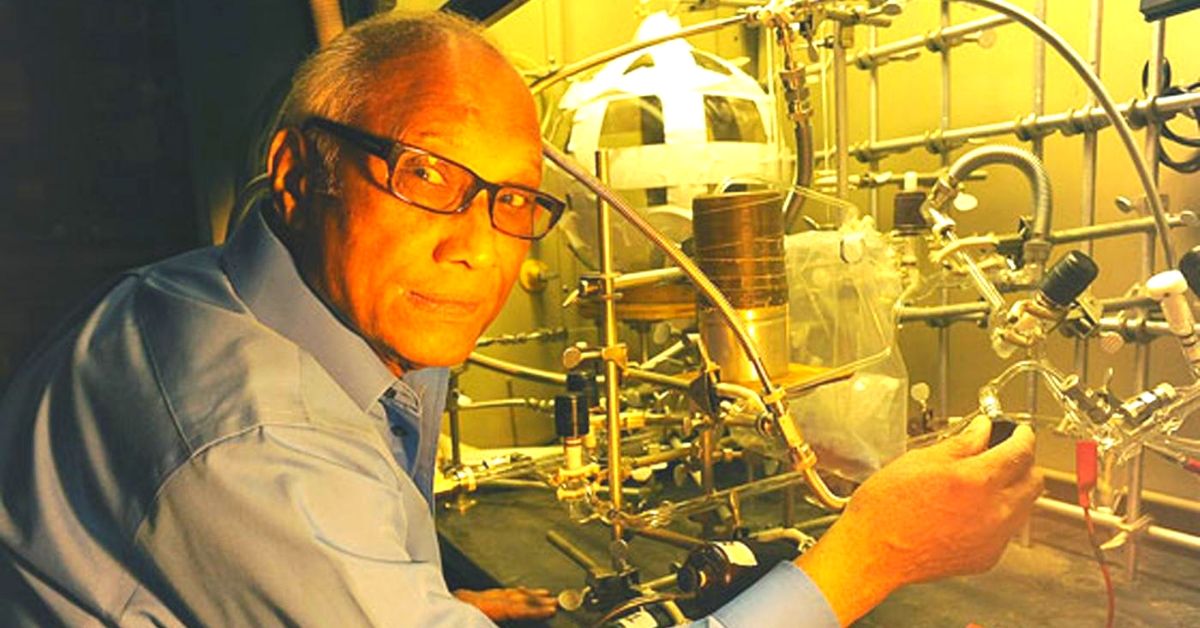Bishun Khare: The Forgotten Scientist Who Has a Crater on Pluto Named After Him!
It was in the 1970s when this physicist from Banaras Hindu University met the legendary Carl Sagan. They would go onto conduct an experiment that would have crucial implications on understanding how life came about on Earth! #ForgottenHeroes #History #Science

For an entire generation of astronomy enthusiasts, it was legendary American astronomer, cosmologist and astrophysicist Carl Sagan’s epic television series called ‘Cosmos: A Personal Voyage’ that inspired them to look beyond life on earth.
In the second episode of this remarkable series titled ‘One Voice in the Cosmic Fugue’, Sagan takes us to his colleague and little known Indian physicist Bishun N Khare’s laboratory at Cornell University, where they speculate about the origins of life.
What Makes You Special? A Multi-Sensory Book for Children With Learning Disabilities and/ or Vision Impairment. Click here for details.
Such was the impact of Khare’s work that after he passed away, the International Astronomical Union (IAU) named a crater on Pluto after him–the Khare Crater. Based on the recommendation of NASA’s New Horizon team that sent the first spacecraft to Pluto in 2015, the IAU named it among the 14 Pluto features found.
Born on 27 June 1933, in the holy city of Varanasi, Khare was a genuine polymath who had obtained degrees in chemistry, physics and mathematics from Banaras Hindu University. Following his doctorate in physics from Syracuse University, New York, he went onto complete his postdoctoral research at Stony Brook University and the University of Toronto. He would go on to become a research scientist at NASA’s Ames Research Centre and the SETI Institute.
“In the course of his career, he investigated the formation of compounds that make up the thick haze shrouding Saturn’s moon Titan, as well as methane and other organic compounds in the geysers that erupt from its sister moon, Enceladus. Many of these compounds were brought into being via photochemical reactions, in which energy from sunlight interacts with the natal gases of a planet or moon,” says this piece published by the SETI Institute.
This work was critical in understanding the key processes that could possibly be precursors to life on other planets. It was in the 1970s, when Khare met with Sagan. They would go onto conduct an experiment at the University of Chicago which would have important implications on understanding how life came about on Earth.

“The two of them followed up an experiment performed at the University of Chicago two decades earlier, in which water and atmospheric gases were ‘cooked’ by artificial lightning into amino acids – a result that seemed to show a natural pathway for the emergence of life on Earth. Khare and Sagan refined the Chicago experiment by using an updated mix of atmospheric gases – a better analog for the air that is thought to have blanketed the young Earth. Their effort confirmed that amino acids could be easily formed in the primitive terrestrial atmosphere of four billion years ago,” adds the SETI Institute article.
“Khare’s work to understand the principal molecular component of haze on Titan, a moon of Saturn called Tholin was based on the research he and Sagan did. Sparks along with U.V. light supplied enough energy to make Tholin through a laboratory mixture of gases to emulate as close to the atmosphere of Titan,” writes Aakarsh Dube for Mashable.
Obtaining various patents in his research of carbon nanotubes, a material he thought would play a key role in space exploration, he also worked extensively in bettering our understanding of other star systems as well.
Also Read: India’s 1st Rocket: ISRO Scientist Shares Stories of Working With Sarabhai, Kalam!
He passed away on 20 August 2013, at the age of 80, but the legacy he leaves behind is quite remarkable.
(Edited by Saiqua Sultan)
Like this story? Or have something to share? Write to us: [email protected], or connect with us on Facebook and Twitter.
If you found our stories insightful, informative, or even just enjoyable, we invite you to consider making a voluntary payment to support the work we do at The Better India. Your contribution helps us continue producing quality content that educates, inspires, and drives positive change.
Choose one of the payment options below for your contribution-
By paying for the stories you value, you directly contribute to sustaining our efforts focused on making a difference in the world. Together, let's ensure that impactful stories continue to be told and shared, enriching lives and communities alike.
Thank you for your support. Here are some frequently asked questions you might find helpful to know why you are contributing?


This story made me
-
97
-
121
-
89
-
167














